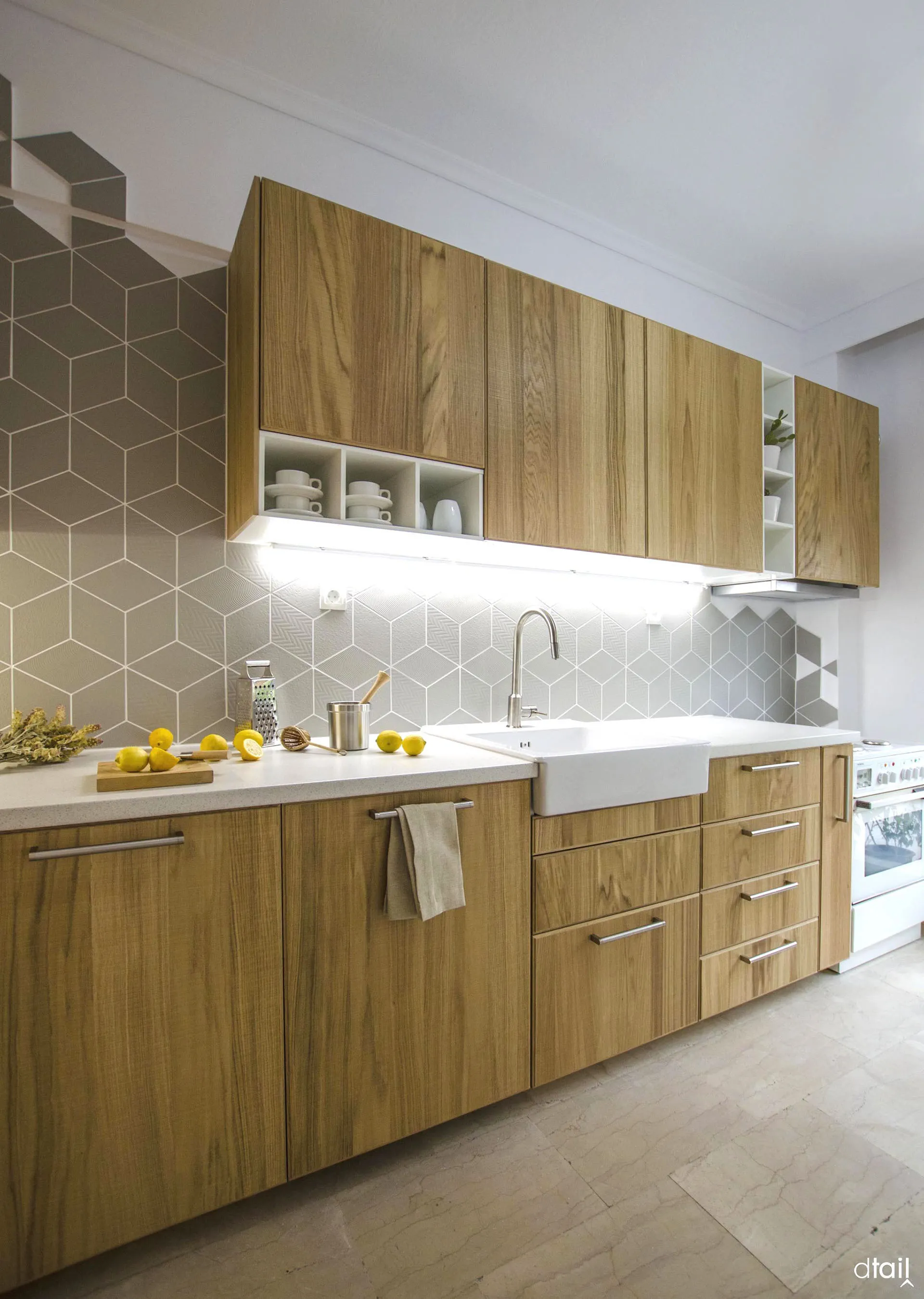Gothic Kitchen Decor [Top 5] Design Ideas
Step back in time and infuse your kitchen with the alluring mystique of the 80s Gothic style. This design aesthetic, characterized by its dark, romantic, and often dramatic flair, is making a significant comeback. Whether you’re aiming for a full-scale remodel or just want to incorporate some gothic elements, these five design ideas will help you transform your kitchen into a captivating space that reflects a sense of timeless elegance. The key to successfully pulling off this look is balance – blending the dramatic with the functional to create a kitchen that’s both visually stunning and practical for everyday use. The 80s Gothic style is not just about aesthetics it’s about creating an ambiance, a mood that speaks to your personal style.
Dark and Moody Color Palettes for Gothic Kitchens
The foundation of any gothic kitchen lies in its color palette. Embrace the darkness by incorporating deep, rich colors that evoke a sense of mystery and sophistication. Black is a cornerstone of the gothic style, but don’t be afraid to explore other hues. Deep charcoal grays, velvety purples, and even forest greens can provide a captivating backdrop. Consider using these colors on your cabinetry, walls, and even your countertops. The goal is to create a sense of depth and shadow, which is fundamental to the gothic aesthetic. Balance the darkness with strategic pops of lighter colors. Metallic accents, like gold or silver, can provide a striking contrast, and adding a touch of cream or off-white can prevent the space from feeling too overwhelming.
Embracing Black and Deep Hues
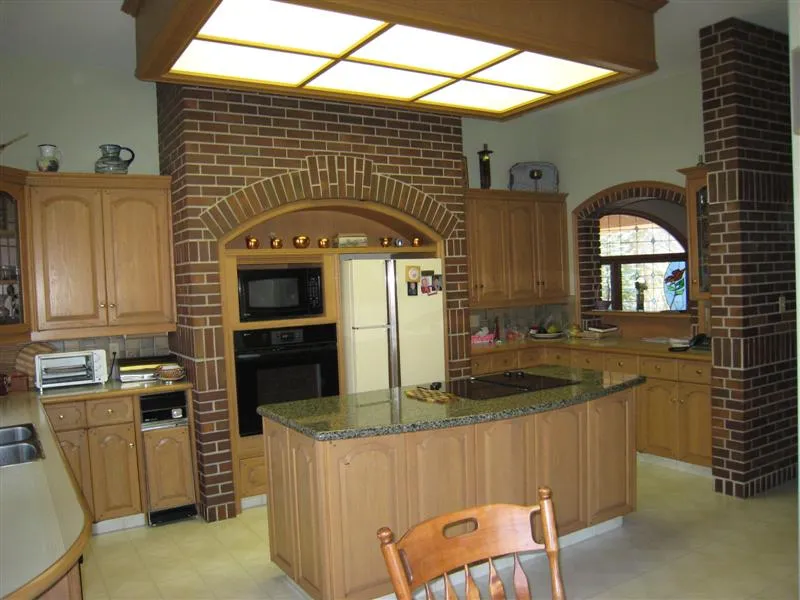
Black kitchens are a bold statement, and when done right, they exude gothic elegance. Opt for matte black cabinetry to create a sleek, modern look, or choose a distressed black finish for a more vintage feel. Deep hues such as burgundy, navy, and emerald green can add richness to your kitchen. These colors work well on walls or as accent colors on kitchen islands or backsplashes. Remember to consider the natural light in your kitchen, as darker colors can absorb light. Ensure adequate lighting to avoid creating a space that feels too enclosed or gloomy. The strategic use of mirrors can also help reflect light and make the space feel larger and brighter.
Incorporating Rich Textures and Finishes
Texture is a crucial element in gothic design, providing depth and visual interest. Integrate various textures to create a layered and luxurious look. Consider using materials such as velvet, wrought iron, and distressed wood. These materials will instantly add a touch of gothic flair to your kitchen. Velvet can be used on bar stools or dining chairs, adding a luxurious feel. Wrought iron can be incorporated in light fixtures, cabinet hardware, or decorative accents. Distressed wood cabinetry or flooring can add an element of history and charm. The juxtaposition of these textures creates a visually rich and engaging space, reflecting the opulent nature of gothic style. Experimenting with different textures ensures your kitchen feels both sophisticated and inviting.
Velvet and Other Fabrics
Introduce velvet fabrics through seating or window treatments to create a lavish atmosphere. Dark, jewel-toned velvets in deep reds, blues, or greens are particularly effective in enhancing the gothic aesthetic. The plushness of velvet adds a tactile element, contributing to the overall richness of the space. Alongside velvet, consider other textured fabrics such as brocade or damask. These fabrics can be used on accent pillows, curtains, or even as upholstery on vintage furniture pieces. They add layers of depth and visual interest, contributing to the gothic kitchen’s luxurious and sophisticated feel. These materials enhance the overall elegance of the kitchen, making it feel more inviting.
Ornate and Textured Wallpaper
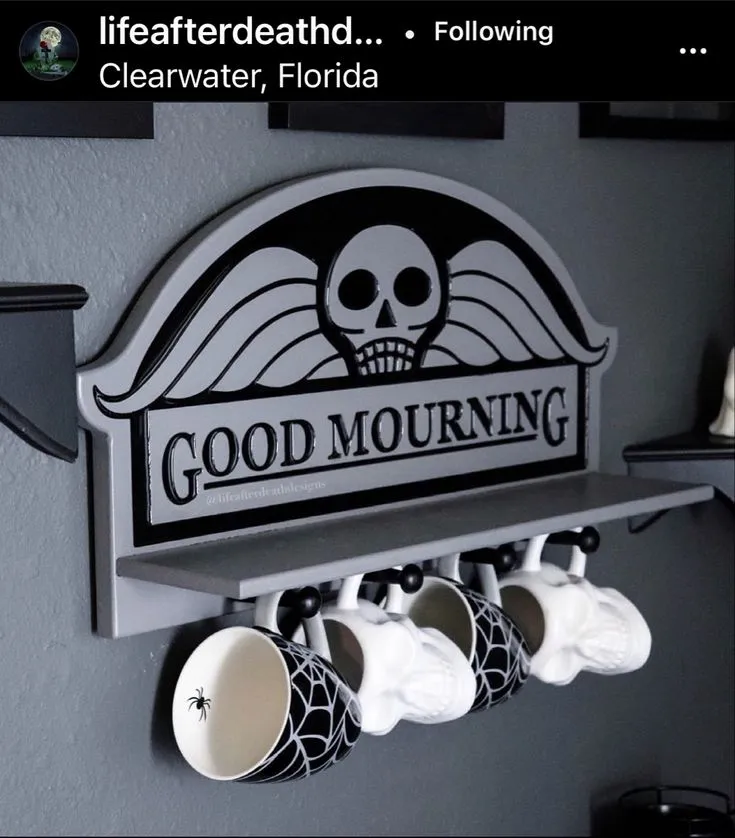
Wallpaper can transform a kitchen, and in a gothic setting, it’s a key design element. Choose wallpaper with ornate patterns such as damasks, fleur-de-lis, or gothic-inspired motifs. These patterns add visual interest and are a nod to the gothic style’s historical roots. For added texture and drama, opt for wallpaper with a slightly raised or embossed design. This adds dimension and enhances the overall aesthetic. Consider using wallpaper as an accent wall to highlight a specific area. Be mindful of the kitchen’s humidity when selecting wallpaper, and choose options that are designed to resist moisture. This ensures the longevity of the wallpaper and maintains the beauty of your gothic kitchen for years to come.
Dramatic Lighting Fixtures for Gothic Kitchens
Lighting is critical in a gothic kitchen, playing a dual role in functionality and ambiance. The right lighting fixtures can instantly set the mood and enhance the drama. Embrace fixtures that echo the gothic style’s historical inspiration and sense of grandeur. From chandeliers to candle-style lights, the options are numerous, allowing you to inject personality into your kitchen design. Consider integrating multiple lighting sources to achieve a layered effect, ensuring that your kitchen is not only visually stunning but also highly functional. The goal is to create a well-lit space with areas of shadow, creating a mysterious yet inviting environment that epitomizes gothic charm.
Chandeliers and Candle-Style Lights
Chandeliers are a quintessential element of gothic design, offering both functionality and style. Choose a chandelier with an ornate design, such as wrought iron or crystal, to add a touch of luxury. For a more authentic feel, consider a chandelier with candle-style bulbs that mimic the look of real candles. Candle-style lighting creates a warm and inviting atmosphere, enhancing the gothic charm of your kitchen. Additionally, you can incorporate sconces with candle-style bulbs. These can be placed on either side of a mirror or on the walls to provide additional lighting. The play of light and shadow from these fixtures will create an atmosphere of mystery and allure, making your kitchen a truly unique space.
Placement and Design of Lighting
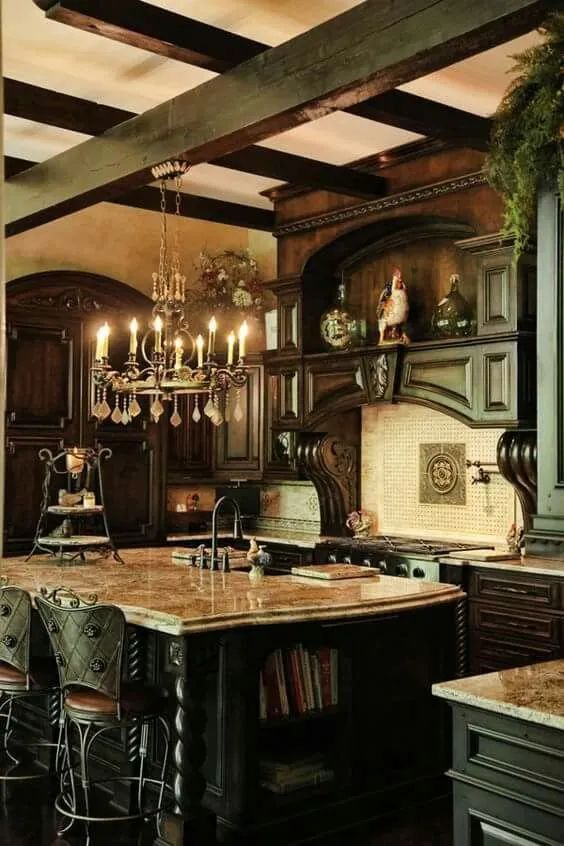
The placement of your lighting is crucial. A chandelier can be the centerpiece, hanging above the kitchen island or dining area. Ensure it is positioned at the correct height to avoid obstructing views or creating glare. Add recessed lighting or track lighting to highlight specific areas, such as countertops or artwork. Under-cabinet lighting is another excellent option. It provides task lighting and adds a subtle glow to the space. Consider dimmable lighting options to adjust the ambiance depending on the time of day or the occasion. Mixing different types of lighting creates a layered effect that enhances both the functionality and the aesthetic appeal of your gothic kitchen, making it more inviting.
Antique and Vintage Decor Elements for Gothic Kitchens
Incorporating antique and vintage decor elements is critical to achieving an authentic gothic kitchen aesthetic. These elements add character, history, and a unique sense of style. Hunt for vintage furniture pieces, antique accessories, and ornate details to infuse your kitchen with gothic charm. The right decor can transform your kitchen into a space that truly embodies the gothic aesthetic, evoking a sense of timeless elegance. These vintage finds bring a sense of history, adding an extra layer of storytelling to your kitchen design.
Incorporating Vintage Furniture
Look for vintage furniture pieces such as a distressed dining table, a cabinet with ornate carvings, or a kitchen island with a weathered finish. These pieces can serve as focal points in your kitchen, adding both functionality and visual interest. Consider the style of the furniture. Gothic Revival furniture from the 19th century is an excellent choice, featuring dark woods, intricate details, and gothic-inspired designs. When selecting furniture, pay attention to the materials and finishes. Distressed wood, wrought iron, and dark-colored upholstery are all in line with the gothic style. Make sure the furniture you choose complements the overall color palette and the ambiance of the kitchen, contributing to a cohesive and inviting space.
Adding Ornate Details and Accessories
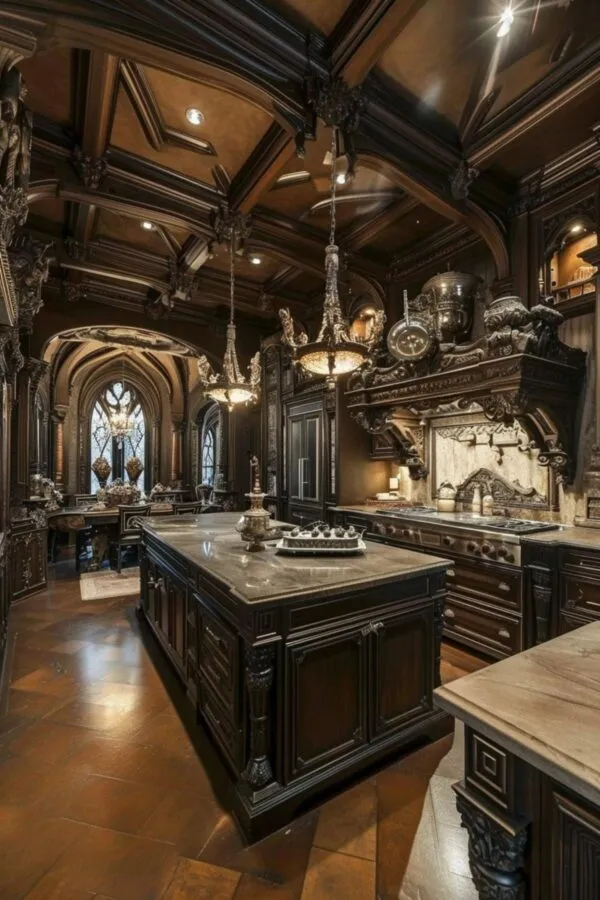
Details are key in creating a truly gothic kitchen. Incorporate ornate details through accessories such as candle holders, antique mirrors, and decorative plates. Choose accessories made from materials like wrought iron, pewter, or silver to enhance the gothic aesthetic. Consider adding details like a vintage clock, a set of antique silverware, or even gothic-inspired artwork. These accessories provide a sense of history and enhance the overall look. The details you choose should reflect your personal style and add a touch of uniqueness to your kitchen. These small touches can significantly impact the overall aesthetic, making your kitchen feel more authentic and inviting.
Accessorizing Your Gothic Kitchen
Accessorizing your gothic kitchen is the perfect way to add a personal touch and enhance the overall aesthetic. By carefully selecting accessories that reflect your style, you can create a kitchen that is not only beautiful but also functional and reflective of your personal tastes. The accessories can be as simple as adding antique candle holders or as elaborate as incorporating ornate wall art. The most critical thing is to select items that resonate with the gothic style and complement the existing design elements of your kitchen.
Adding Gothic Kitchen Decor
Consider adding items with gothic themes to enrich the decor. This could include gothic-style crosses, antique mirrors, and wrought iron decor. Mirrors with elaborate frames can add a touch of elegance, and gothic-style art can serve as a focal point. Wrought iron decor, such as candle holders or pot racks, can add to the ambiance of the kitchen. When choosing these elements, focus on quality and style to ensure that the additions complement the gothic kitchen design. These accessories are the perfect way to enhance the gothic aesthetic and bring more character to your kitchen space. These thoughtful additions reflect the style and enhance the overall look.
Statement Pieces and Focal Points
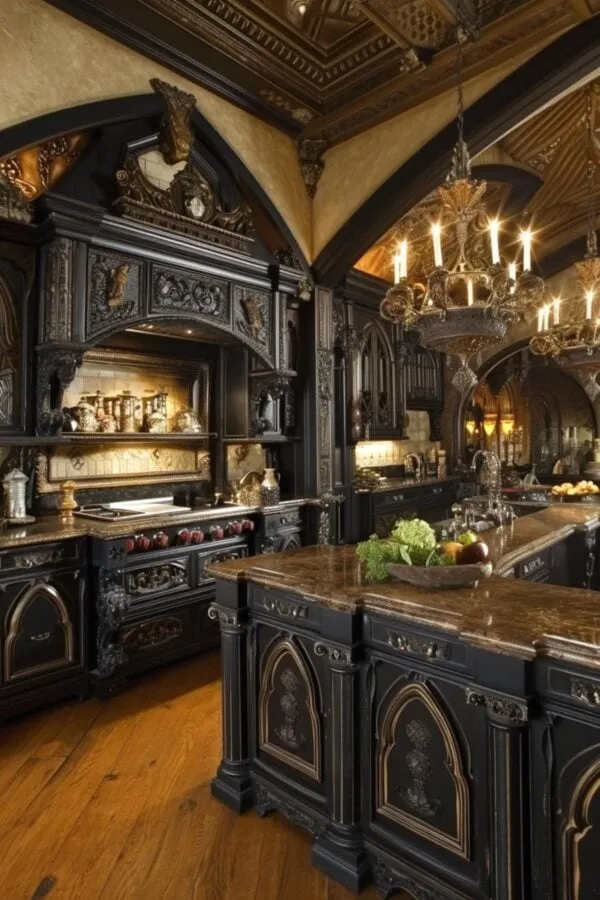
Every gothic kitchen needs a statement piece or a focal point that draws attention and sets the tone for the entire space. This could be an elaborate chandelier, a dramatic piece of artwork, or even a unique piece of furniture. When selecting your statement piece, consider the overall design of your kitchen and choose something that will enhance the aesthetic appeal. Make sure that the focal point is positioned in a way that it is easily visible and draws the eye, enhancing the overall impression of the kitchen. This focal point helps to solidify the gothic theme, making the kitchen more appealing and inviting.
Conclusion
Transforming your kitchen into a gothic haven is all about embracing dramatic colors, rich textures, and vintage details. By incorporating these five design ideas, you can create a space that reflects your unique style and transports you to another era. Remember that balance is key. Don’t be afraid to experiment with different elements until you find the perfect blend of elegance, mystery, and functionality. With careful planning and a touch of creativity, your gothic kitchen will become a captivating space to cook, entertain, and enjoy the beauty of a truly unique design. The 80s Gothic style provides a framework for self-expression, allowing you to create a space that is both functional and evocative of your personal style.
